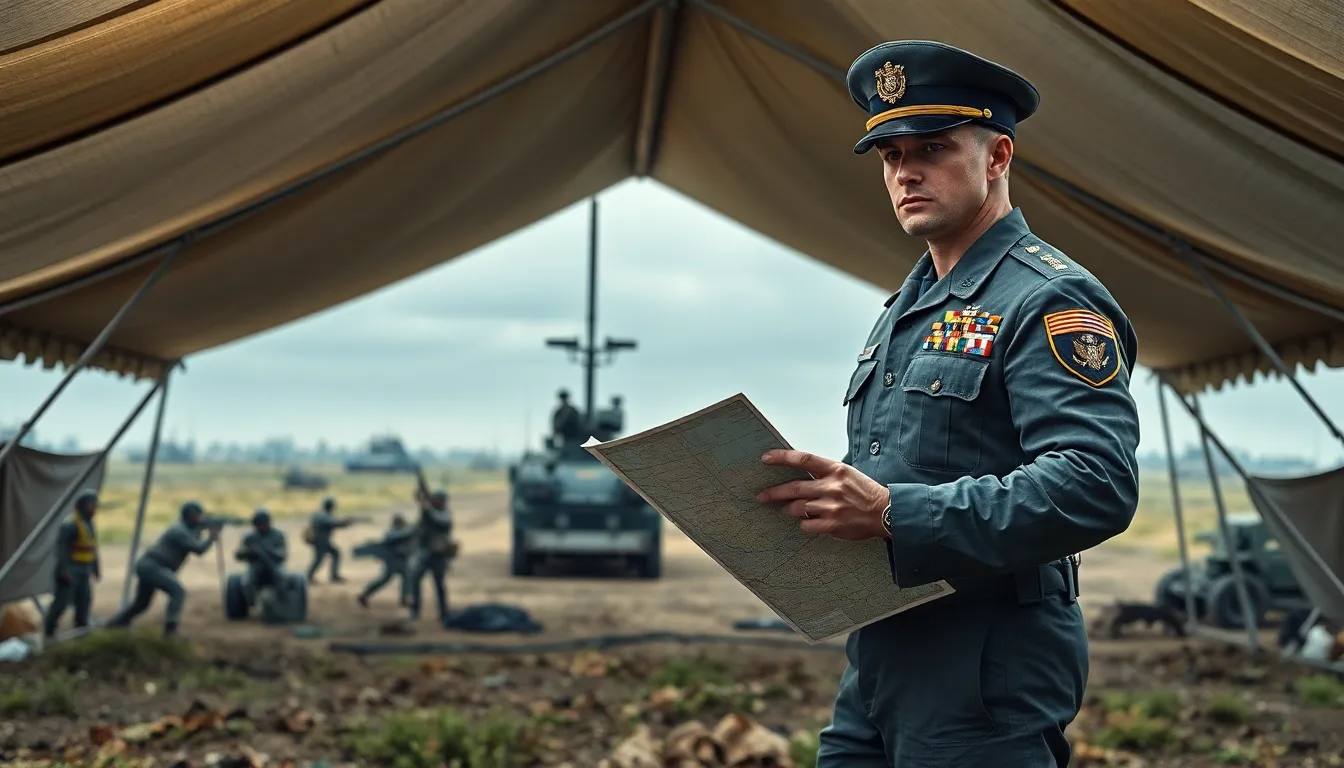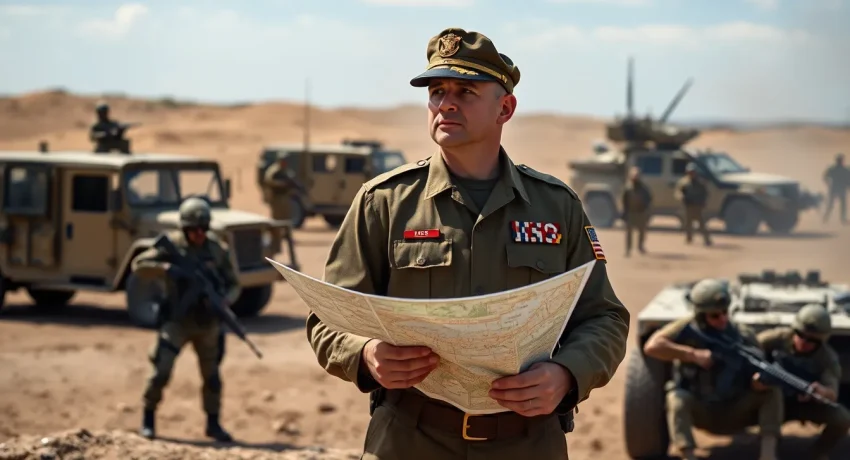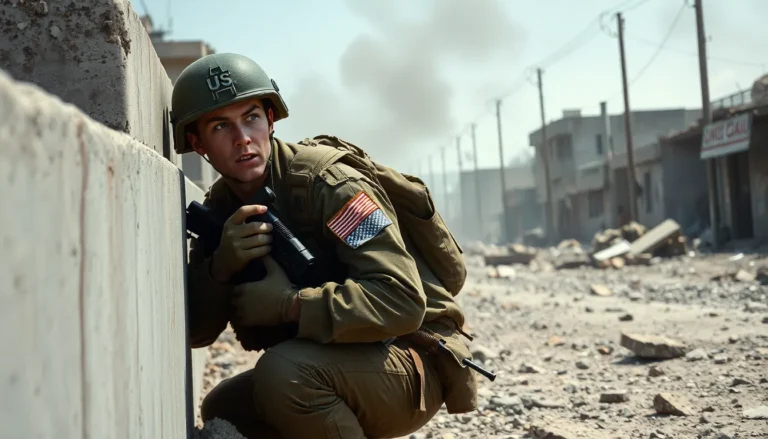In the chaotic world of warfare, understanding battlefield command structure is like knowing the secret menu at your favorite diner—once you get it, everything makes sense. It’s not just about who shouts orders the loudest; it’s a finely tuned orchestra where each musician plays their part to create harmony amid the chaos. Imagine trying to lead a charge without knowing who’s in charge—it’s like herding cats in a thunderstorm.
Table of Contents
ToggleOverview of Battlefield Command Structure
Understanding the command structure in battlefield operations proves essential for effective leadership. It encompasses various tiers, ranging from strategic command to tactical execution roles. At the top, strategic leaders formulate long-term objectives and overall mission directives. Operational commanders bridge the gap, translating strategies into actionable plans.
Tactical commanders focus on immediate battlefield actions. They coordinate units directly engaged in combat situations. This hierarchy promotes clear communication and responsibility at all levels. Each role plays a critical part, ensuring seamless progress toward mission goals.
Additionally, the command structure features specialized units that operate within this framework. Examples include infantry companies, armored divisions, and air support teams. Each unit’s unique capabilities enhance overall effectiveness. Leaders within these units must exhibit adaptability and decisiveness.
Moreover, communication systems support coordination across various units. Technological advancements enable real-time updates and intelligence sharing. This facilitates informed decision-making, enhancing the ability to respond promptly to evolving battlefield dynamics.
Operational success largely hinges on this structured approach. Clear delineation of roles prevents confusion during intense scenarios. Each leader’s understanding of their responsibilities contributes to mission efficiency. Consequently, a unified command structure fosters successful outcomes in complex combat environments.
Key Components of Command Structure

The command structure features essential elements that facilitate effective management in battlefield operations. Understanding these components is crucial for success.
Command Hierarchy
Command hierarchy operates at multiple tiers to ensure efficient direction and control. Strategic leaders set overarching objectives that define mission outcomes. Operational commanders translate those objectives into actionable plans. Tactical commanders execute on-the-ground strategies, making decisions that impact immediate actions. Each level of hierarchy communicates clearly, fostering cohesion and minimizing confusion. This structured approach allows for quick response to changing battlefield conditions.
Roles and Responsibilities
Roles and responsibilities play a critical part in the command structure. Each military unit has designated functions that contribute to mission success. Infantry companies engage directly with enemy forces, while specialized units like air support deliver targeted assistance. Leaders at each level ensure their teams understand their specific duties and maintain accountability. Communication among various roles enhances coordination, allowing units to work together seamlessly during operations. Well-defined responsibilities improve efficiency and effectiveness in complex scenarios.
Types of Battlefield Command Structures
Understanding different battlefield command structures enhances operational effectiveness. Each structure uniquely influences decision-making and communication in military environments.
Centralized Command
Centralized command features a clear top-down approach. Senior leaders maintain control, directing all strategic and tactical decisions. Commanders at higher levels evaluate information and issue orders to subordinate units. This structure promotes consistency, as everyone adheres to the same strategic vision. Real-time feedback flows upward; strategic leaders adjust orders based on frontline insights. However, it may slow responsiveness to changing conditions. Rigidity in decision-making can hinder adaptability in chaotic situations. While this structure provides clear authority, it limits lower-level initiative and creative problem-solving.
Decentralized Command
Decentralized command empowers lower-level leaders with decision-making authority. Commanders at various tiers exercise autonomy, adjusting tactics based on immediate battlefield conditions. This flexibility encourages swift responses; units adapt tactics rapidly while executing strategies. Lower-level leaders possess firsthand knowledge, enabling informed choices that align with overall objectives. Communication remains crucial as it fosters coordination among diverse units. Though this structure increases initiative, it can lead to inconsistencies if not carefully managed. Mutual trust among commanders promotes operational coherence while maximizing the effectiveness of specialized units. Overall, decentralized command nurtures innovation and agility on modern battlefields.
Impact on Battlefield Operations
Understanding the command structure significantly influences battlefield operations. Leaders’ approaches to decision-making directly affect mission outcomes, while effective communication ensures cohesive efforts.
Decision-Making Processes
Decision-making processes rely on hierarchy within the command structure. Strategic commanders establish broad objectives, which operational leaders translate into specific tasks. Tactical commanders then react swiftly to battlefield developments. Each level’s ability to assess situations influences responsiveness. For example, if lower-level leaders can make immediate decisions, it enhances adaptability during combat. Empowered teams frequently innovate solutions on the fly, improving operational success rates. Quick assessments and action align closely with mission goals. The clear division of responsibilities streamlines these processes, fostering a culture of accountability.
Communication Flow
Communication flow represents a crucial component in battlefield operations. Effective systems ensure information travels swiftly between command tiers. For instance, real-time updates from reconnaissance enhance situational awareness at all levels. Leaders rely on these insights to adapt strategies dynamically. Clarity in orders prevents confusion and misinterpretation, essential during high-stakes scenarios. Regular briefings further reinforce team cohesion and understanding of objectives. In chaotic environments, established communication protocols allow for prompt response to evolving threats. Overall, seamless communication fosters resilience and efficiency in executing complex operations.
A well-defined battlefield command structure is vital for achieving operational success. It ensures that every level of leadership understands its role and responsibilities. This clarity fosters effective communication and coordination among units.
By balancing centralized and decentralized approaches, military leaders can adapt to the fast-paced nature of combat. Empowering lower-level leaders enhances responsiveness and innovation, crucial for navigating complex battlefield dynamics.
Ultimately, a strong command structure not only streamlines decision-making but also strengthens team cohesion. This synergy is essential for executing missions efficiently and effectively in the chaos of warfare. Understanding these principles equips military personnel to excel in their roles and contribute to mission success.




